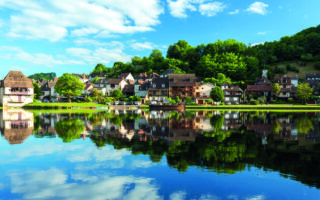French Property Location Guide: Brittany
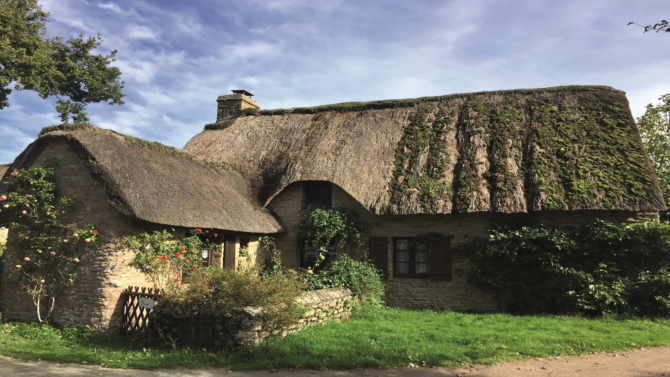
Famous for a distinct personality, even within France, Brittany offers coast, countryside and Celtic heritage, so whatever your property dream, Annaliza Davis believes the region will have what you’re looking for…
This chunk of northwest France sitting under Devon and Cornwall is one of the few French regions that most British people can point to on a map. A convenient hop across the Channel from Plymouth or Portsmouth, it offers more than 1,500 miles of coastline, countless beaches and vast unspoilt landscapes, and has always been a popular location for holiday homes, plus your budget will go a long way here.
Property prices in Brittany have increased significantly over the past couple of years, primarily because the pandemic forced many people to work from home, leading to a frustration with cramped urban properties and a realisation that it’s possible to work for a big company without living in a city.
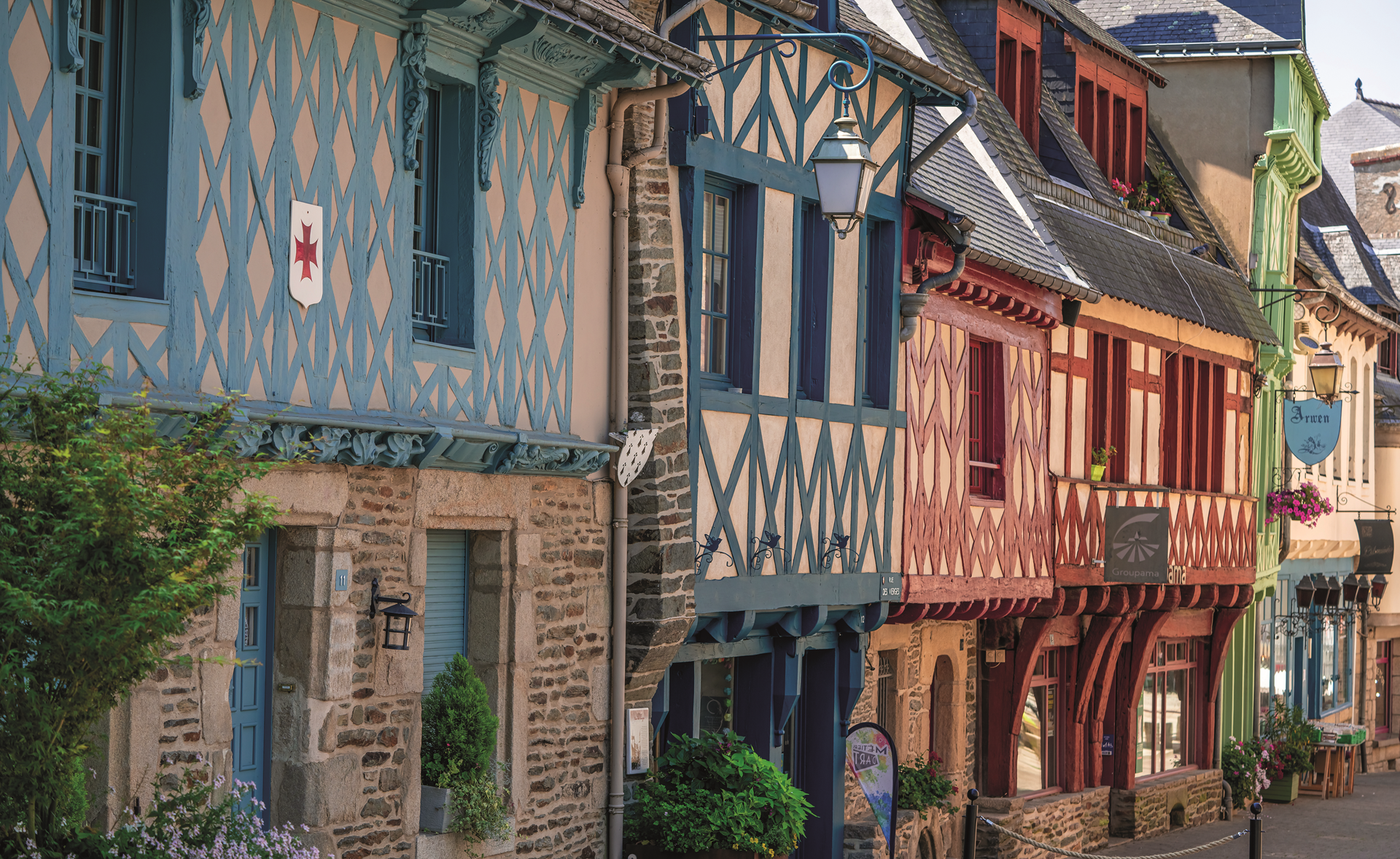
Half-timbered colombage houses in Josselin are typical of the region, (c) Shutterstock
MATCH THE PLACE TO YOUR POCKET
Thousands of homes across Brittany were sold at inflated prices between 2020 and 2022 as workers fled the cities in favour of more space and a better quality of life – particularly along the coast.
This year, France’s average property price has risen to €3,302/m² but the market has stabilised in Brittany, where the average remains a very reasonable €2,717/m². There’s significant variation depending on location: some inland areas are just €1,463/m², while the sought-after coastal spots near Dinard and St-Malo can reach €6,091/m².
Brittany has great travel links through the ports of Roscoff and St-Malo, four airports (Rennes, Lorient, Brest and Quimper), plus high-speed rail networks connecting Paris to Rennes in two hours or to Quimper in four. This further explains why this region has become so popular with people leaving the bigger urban areas.
You certainly get more space here: Brittany’s population density of 123 people per square kilometre puts it on a par with North Dorset (compare this with 250/km² in Alpes-Maritimes and 21,000/ km² in Paris). Family is a priority here: Bretons make time to have meals together around the table, and even those who develop a career further afield are drawn back to Brittany, either when they have families or retire.
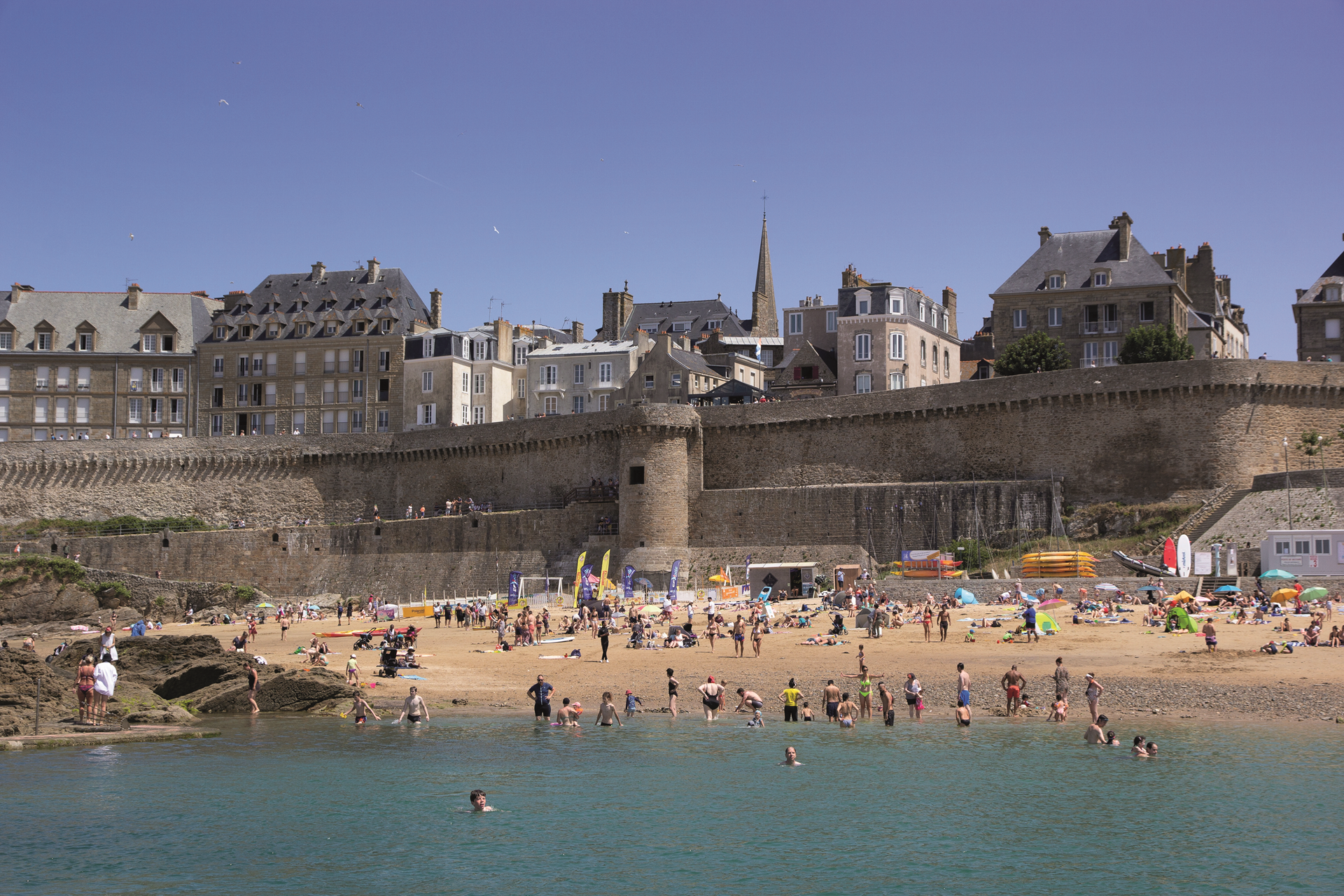
St. Malo, (c) Shutterstock
LOCATION: WHERE TO FIND WHAT YOU WANT
If you’re looking for a city- centre property, Rennes is the top choice with over 200,000 inhabitants. Home to the region’s political movers and shakers, Rennes also has a large student population and an average property price of €4,201/m². Apartments in the city centre start at €175,000 or €86,000 for a 35m² studio flat, but there is a strong rental market for both professionals and students.
Other cities to consider are Brest (141,000 residents), Quimper (63,000), Lorient (57,000) and Vannes (53,000); each has a student population, international offices and shopping arcades. Brest and Lorient are mostly modern, having lost much of their traditional architecture during the wars, while Quimper and Vannes are picturesque cities popular with tourists.
Vannes regularly tops the list of desirable places to live and is a hotspot for tourism, thanks to its seaside location, Bénodet and charming harbour towns like Audierne or Concarneau. In these towns, a 30m² seaview apartment on a complex with pool starts at around €105,000.
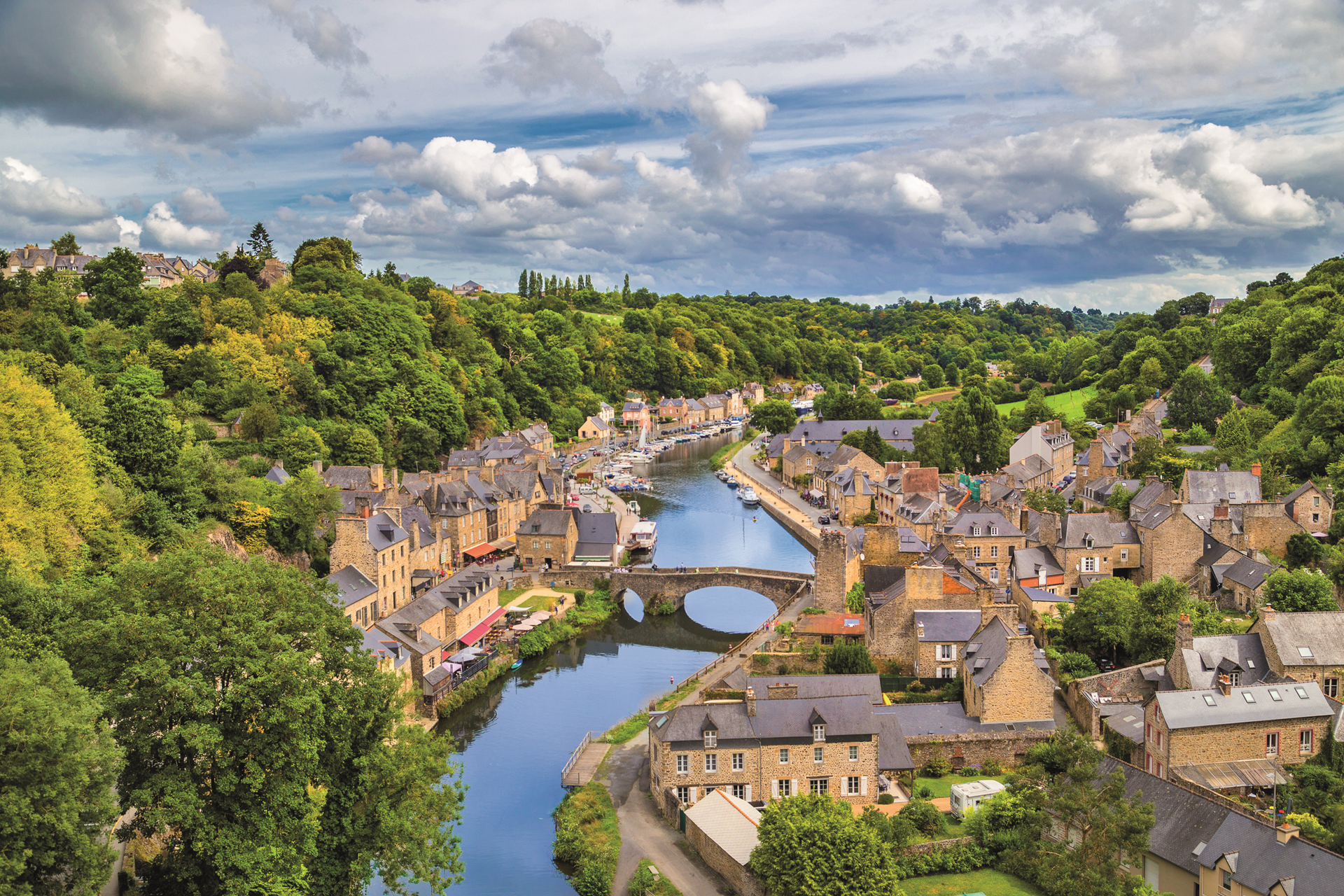
The delightful medieval town of Dinan is loved by tourists and locals alike, (c) Shutterstock
Unsurprisingly, inland rural locations offer far better value: €50,000 buys a mid-terrace one-bedroom home with private garden in Ruffiac, a 73m² end-terrace stone property with garden north of Fougères, or a ground-floor studio in Loudéac.
If you’re brave enough to take on a renovation project, you’ll be spoilt for choice in Brittany, where €25,000 can buy a rural ruin, a run-down townhouse or a barn with land. The question of cost- effectiveness depends on how much professional help you’ll need – builders are in demand.
For those looking to self- build, avoid a terrain de loisirs as these plots can only be used for camping and temporary structures – even motorhomes might not be allowed. Building plots are terrains constructibles or terrains à bâtir, ideally with water and electricity already in place (viabilisé). A €50,000 budget gives you a choice of 500m² plots within 20 minutes of the coast or 8,000m² inland.
Beware any property that is listed as viager, as it will come with a sitting tenant!
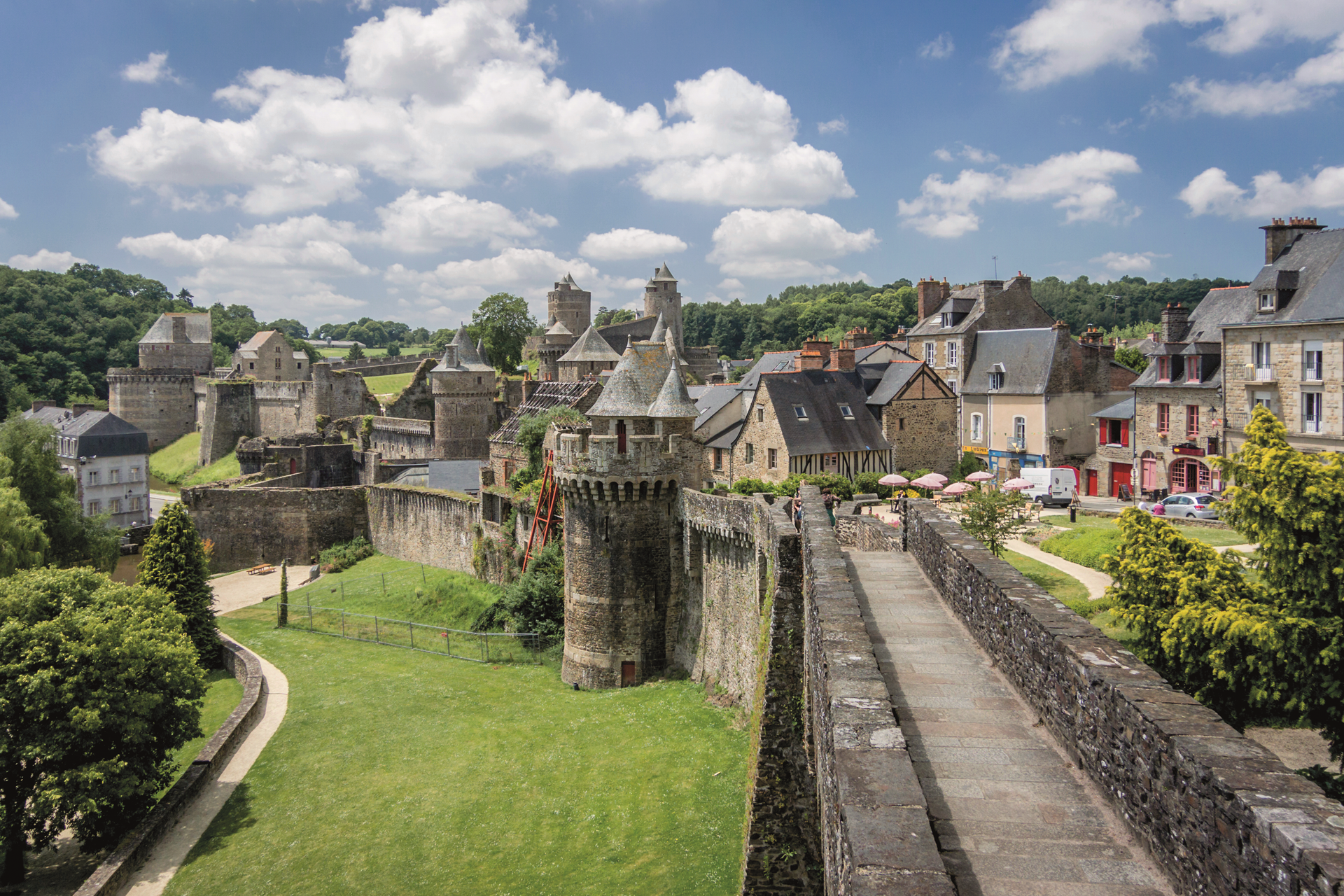
Fougeres, (c) Shutterstock
TRANSPORT
The region’s four airports (Rennes, Lorient, Brest and Quimper) offer everything from budget airlines to direct flights to London City, boosted by Nantes airport to the south, which has a huge range of international flights and airlines. Given Brittany’s geography, ferries are also a good option, particularly from Roscoff and St-Malo, with routes to the UK, Ireland and even northern Spain. Overland, the high-speed TGV train network and operations have dramatically improved over the past decade, now offering regular services from Rennes and Quimper to Paris. And finally, Brittany’s road networks are well- maintained and it’s a point of pride that this is a region with no toll roads.
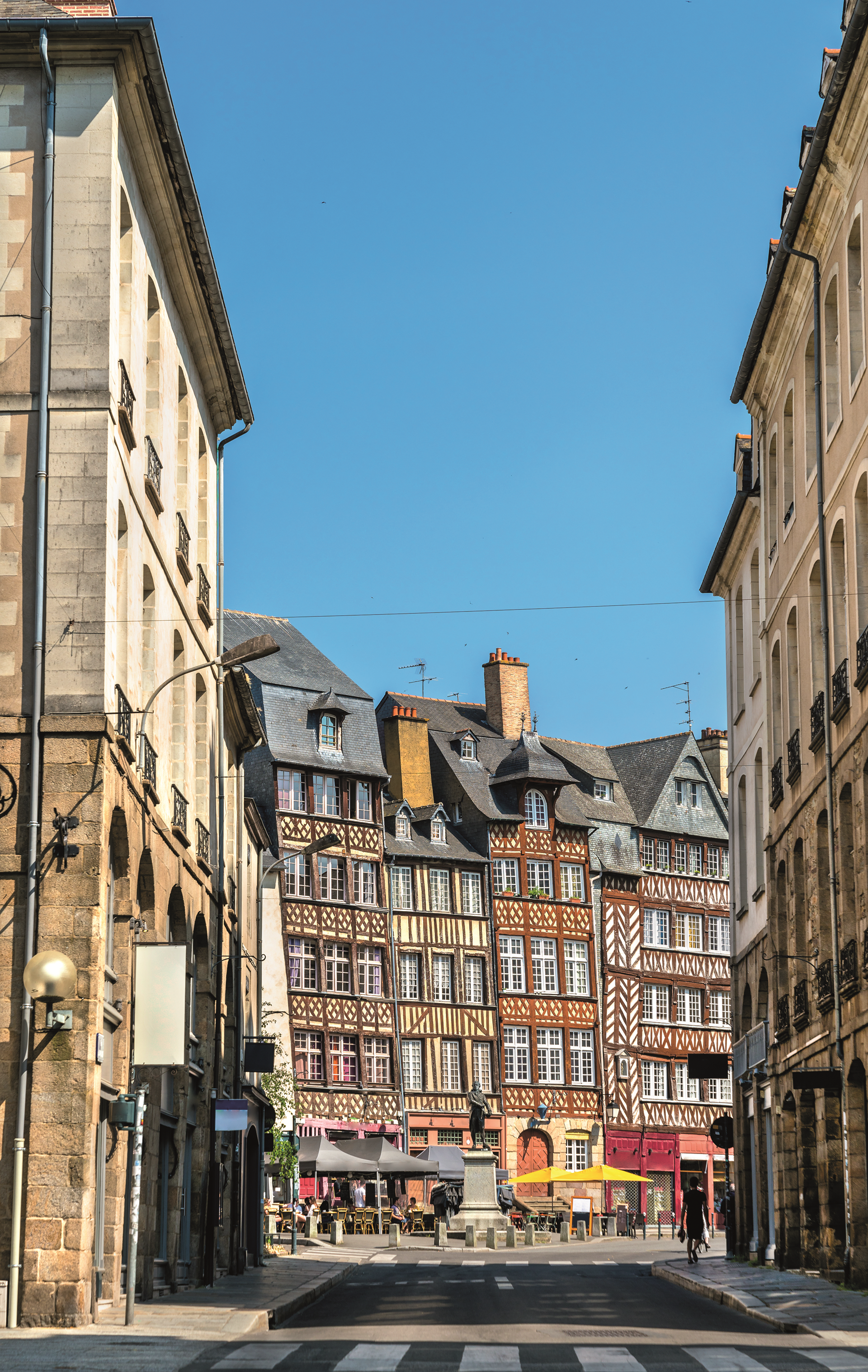
Rennes, (c) Shutterstock
EMPLOYMENT AND THE ECONOMY
While Brittany once had a reputation for unemployment, the number of people out of work has recently dropped to less than 6%, which is below the national average (7%) and the number of jobseekers in the region is falling. There are positive signs for the self- employed, too, with record numbers of start-ups and more businesses continuing to trade, while only 8% of the population is retired.
Along with food production and its related industries, tourism is key to Brittany’s economy. The region continues to attract British and foreign tourists, but professionals are also noticing rising numbers of visitors coming from the southern regions of France, where the summers are increasingly becoming unbearably hot for many people – and this is a trend that looks very likely to continue.
WHAT THE AGENTS SAY…
Sheelagh Gorham of Agence Newton has worked as a property agent in France for more than 15 years, specialising in the northwest of Brittany.
“The past five years have brought big changes in the property market here. Firstly – as with all of France – Brexit meant that a permanent move now involves more bureaucracy, but many British people see that the quality of life here is worth the extra effort! Of course, if you’re looking for a holiday home, the process is a lot simpler.
“The pandemic brought a huge boost to Brittany as thousands of city dwellers realised it was feasible to work from home and started to buy up houses with gardens so they could enjoy more space for the price of a city flat. Even post- pandemic, many only commute part-time, working the rest of the week from home.
“One final factor that is bringing people to Brittany is the weather! Buyers and tourists are focusing on the north because the south is simply too hot. The coastlines, culture and countryside will also be top reasons for living here, and for British buyers it can be a great way to access the benefits of French life while staying within easy reach of friends and family.”
Looking for more like this?
Every issue of French Property News delivers in-depth regional buying guides, sound and trusted advice from leading experts, inspirational real life stories, renovation tales and lots of lovely properties to browse.
Lead photo credit : Chaumière (from the word chaume for straw) is a thatched cottage, (c) Shutterstock
Share to: Facebook Twitter LinkedIn Email
More in brittany, Location guide
Leave a reply
Your email address will not be published. Required fields are marked *


